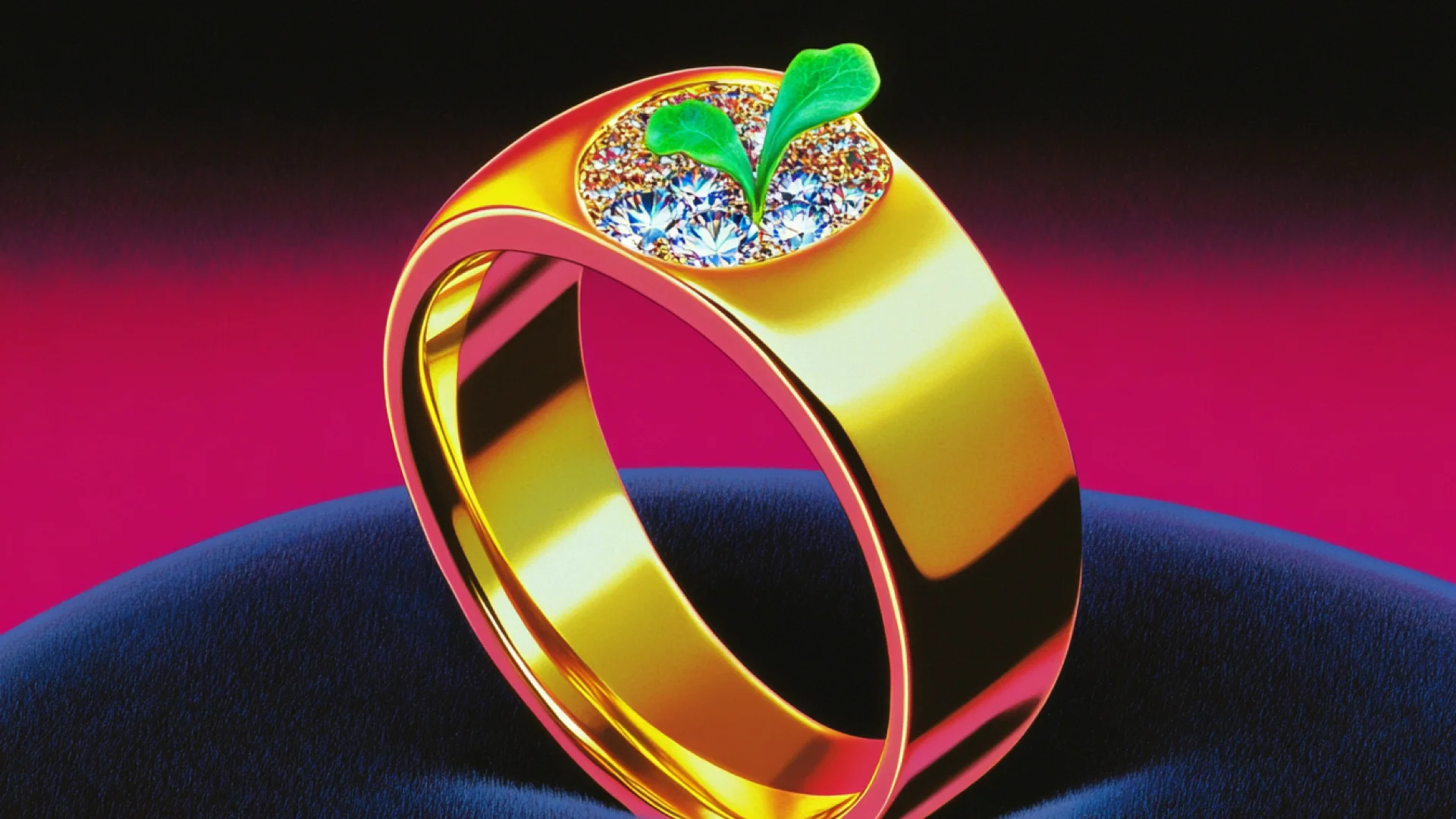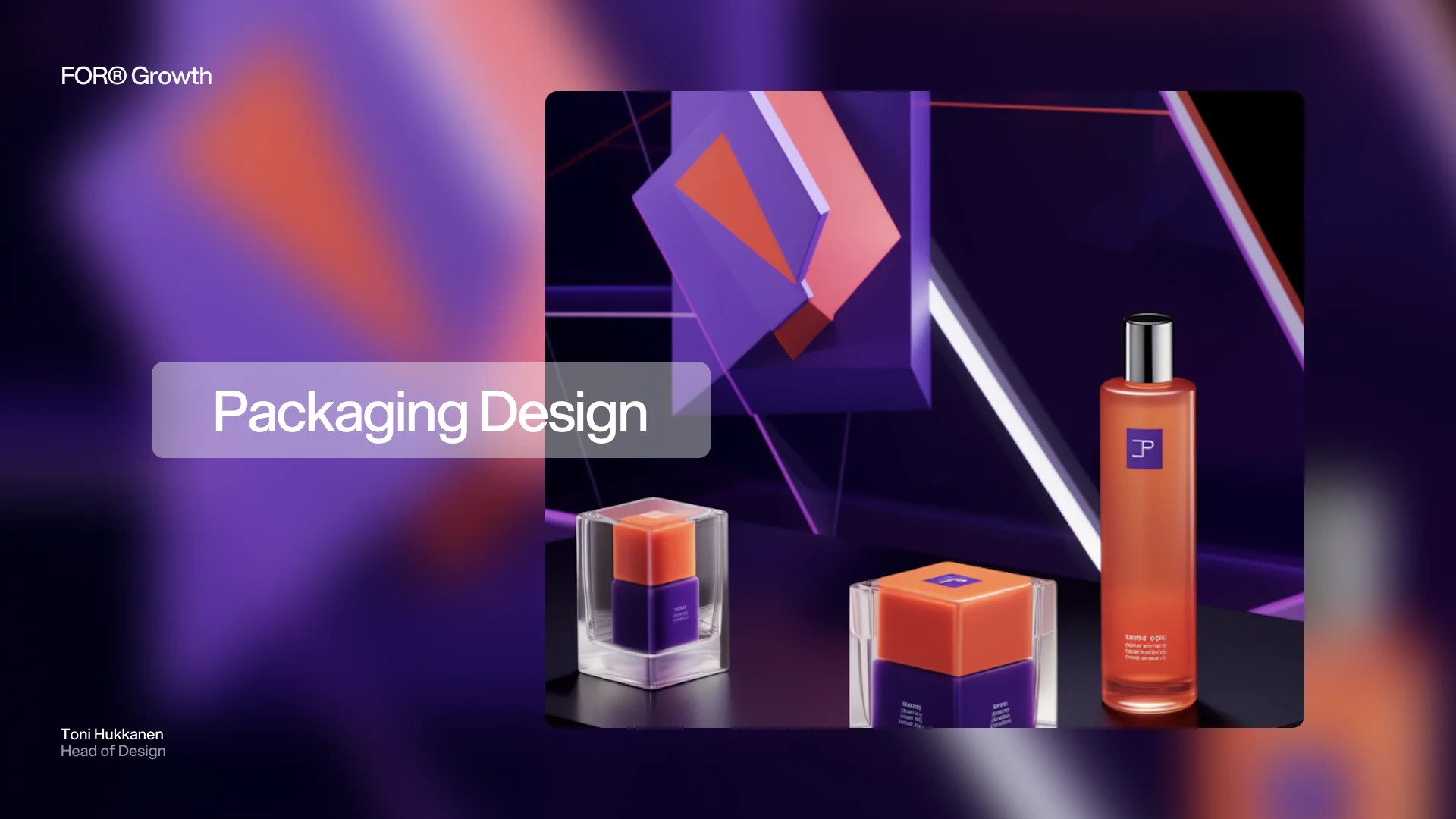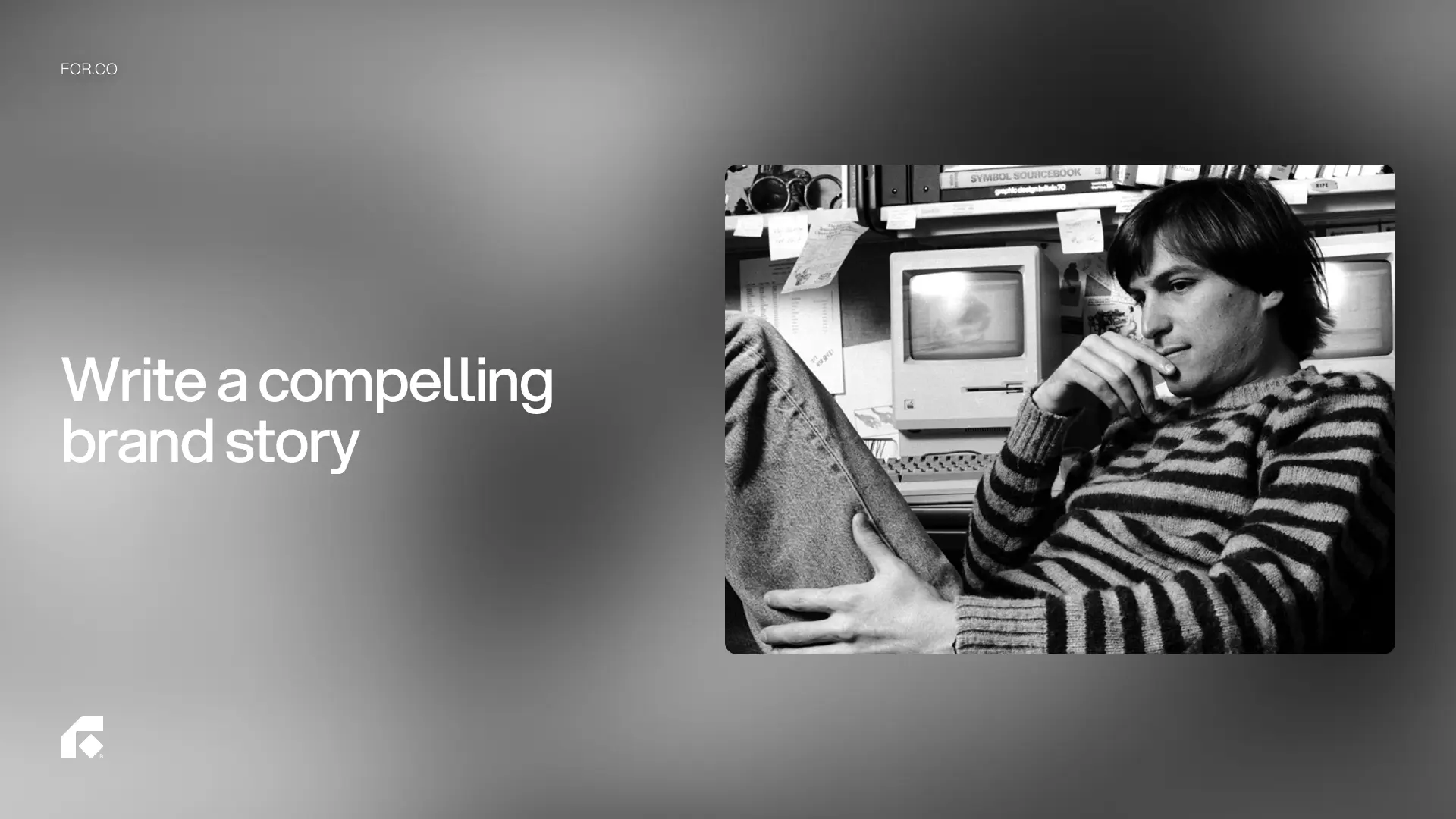Book a Call
Sustainability
Luxury brands
Sustainable Luxury Brands
Position a Luxury Brand
ARTICLE #150
Table of contents
How to position a luxury brand with a focus on sustainability


Sustainability
Luxury brands
Sustainable Luxury Brands
Position a Luxury Brand
Sustainability
Luxury brands
Sustainable Luxury Brands
Position a Luxury Brand
Written by:
5 min read
Updated on: February 5, 2025
Toni Hukkanen
Head of Design

Creative Direction, Brand Direction
Toni Hukkanen
Head of Design

Creative Direction, Brand Direction
Luxury and sustainability might sound like unlikely companions, but combining them is increasingly essential for brands hoping to stand out—and not just for glitz. High-end consumers are paying more attention to whether a brand leaves a colossal carbon footprint or takes meaningful steps towards reducing it. A strong brand positioning framework that weaves ethical and eco-friendly choices into everything, from sourcing materials to worker welfare, can turn that spotlight in your favour.
Luxury and sustainability might sound like unlikely companions, but combining them is increasingly essential for brands hoping to stand out—and not just for glitz. High-end consumers are paying more attention to whether a brand leaves a colossal carbon footprint or takes meaningful steps towards reducing it. A strong brand positioning framework that weaves ethical and eco-friendly choices into everything, from sourcing materials to worker welfare, can turn that spotlight in your favour.
Why does sustainability matter to luxury brands?
Why does sustainability matter to luxury brands?
Let’s be honest: luxury has traditionally meant exclusivity and jaw-dropping craftsmanship—often without a second thought for the planet. Now, though, people are demanding more than glossy images. They’re checking whether a label genuinely respects the environment. Embracing eco-friendly principles doesn’t drag down your brand’s grandeur; it actually highlights a deeper sense of care that can make you shine in a competitive space.
There’s also a financial upshot. When a brand depends on materials that might run out, supply problems and unpredictable costs aren’t far behind. Choosing renewable resources and teaming up with ethical suppliers keeps those troubles at bay. It also modernises the concept of exclusivity, appealing to those who adore fine aesthetics but insist on genuine responsibility, too.
Let’s be honest: luxury has traditionally meant exclusivity and jaw-dropping craftsmanship—often without a second thought for the planet. Now, though, people are demanding more than glossy images. They’re checking whether a label genuinely respects the environment. Embracing eco-friendly principles doesn’t drag down your brand’s grandeur; it actually highlights a deeper sense of care that can make you shine in a competitive space.
There’s also a financial upshot. When a brand depends on materials that might run out, supply problems and unpredictable costs aren’t far behind. Choosing renewable resources and teaming up with ethical suppliers keeps those troubles at bay. It also modernises the concept of exclusivity, appealing to those who adore fine aesthetics but insist on genuine responsibility, too.
Making your brand’s vision sustainable
An eco-conscious luxury brand starts with clear, measurable goals. These objectives should tie directly into how your brand sees its place in the world—rather than sitting on a checklist that never sees the light of day. Opting for eco-friendly materials, working with suppliers who keep emissions down, and cutting waste at every stage are all immediate ways to earn credibility.
You’ve done the hard work to earn eco-friendly credentials—don’t tuck them away where nobody sees them. Post progress updates on your site, share behind-the-scenes snippets on social media, and keep everyone in the loop. If new ideas come along or feedback sparks a change in direction, it’s perfectly fine to tweak your goals. In fact, it’s a good sign: it shows customers you are not just putting on a show, but genuinely committed for the long haul.

(Tip: a little sincerity goes a long way. If something hasn’t gone perfectly, admit it and explain how you are making it right.)
An eco-conscious luxury brand starts with clear, measurable goals. These objectives should tie directly into how your brand sees its place in the world—rather than sitting on a checklist that never sees the light of day. Opting for eco-friendly materials, working with suppliers who keep emissions down, and cutting waste at every stage are all immediate ways to earn credibility.
You’ve done the hard work to earn eco-friendly credentials—don’t tuck them away where nobody sees them. Post progress updates on your site, share behind-the-scenes snippets on social media, and keep everyone in the loop. If new ideas come along or feedback sparks a change in direction, it’s perfectly fine to tweak your goals. In fact, it’s a good sign: it shows customers you are not just putting on a show, but genuinely committed for the long haul.

(Tip: a little sincerity goes a long way. If something hasn’t gone perfectly, admit it and explain how you are making it right.)
Rethinking materials and supply chain
Sustainability in luxury often starts with materials that don’t deplete finite resources. Recycled fabrics, upcycled metals, or responsibly sourced leathers can lower environmental damage—and they look just as refined as their traditional counterparts.
Meanwhile, upcycling is on the rise. Labels like Riccardo Cenedella are reworking salvaged materials into fresh, high-end pieces. This isn’t a fleeting trend. Today’s premium shoppers are increasingly supportive of brands that champion social awareness and environmental stewardship.
Partnering with suppliers who value transparency is equally vital. Conducting regular checks or audits keeps everyone honest. If a factory or farm claims to meet eco-friendly standards, you’ll want proof. That way, your brand’s messaging matches reality—essential for building trust in a fickle market.
Sustainability in luxury often starts with materials that don’t deplete finite resources. Recycled fabrics, upcycled metals, or responsibly sourced leathers can lower environmental damage—and they look just as refined as their traditional counterparts.
Meanwhile, upcycling is on the rise. Labels like Riccardo Cenedella are reworking salvaged materials into fresh, high-end pieces. This isn’t a fleeting trend. Today’s premium shoppers are increasingly supportive of brands that champion social awareness and environmental stewardship.
Partnering with suppliers who value transparency is equally vital. Conducting regular checks or audits keeps everyone honest. If a factory or farm claims to meet eco-friendly standards, you’ll want proof. That way, your brand’s messaging matches reality—essential for building trust in a fickle market.
Forging sustainable product design and packaging
Designing for sustainability is easier when it’s built into the earliest sketches. Tacking on eco-friendly features at the last minute can feel a bit like rushing to buy birthday candles the morning of the party—stressful and often half-baked. When you start with green thinking from day one, the design, materials, and ethical sourcing flow together naturally, creating a more genuine outcome.

Choosing eco-friendly materials for product design
Replacing conventional plastics with biodegradable or recycled components is a straightforward start. Collaborating with suppliers who specialise in greener raw materials can deepen your commitment. When sustainability is part of the creative process, the end product feels cohesive—and customers notice the difference.
Reducing waste through minimalist packaging
Nobody wants to unpack five layers of cardboard and foil just to reach a small item. Stripping packaging back to the essentials cuts down on waste, lowers your carbon footprint, and often saves money, too. Premium storage boxes that double as keepsakes can also encourage customers to hold onto them instead of binning them.
Encouraging reuse and recycling in packaging
Clear instructions or symbols for recycling can help eco-conscious buyers dispose of packaging responsibly. If boxes or pouches are high-quality, people might even reuse them. Some brands take it a step further by offering perks for returning used packaging—an easy way to involve shoppers in your sustainability mission.
Designing for sustainability is easier when it’s built into the earliest sketches. Tacking on eco-friendly features at the last minute can feel a bit like rushing to buy birthday candles the morning of the party—stressful and often half-baked. When you start with green thinking from day one, the design, materials, and ethical sourcing flow together naturally, creating a more genuine outcome.

Choosing eco-friendly materials for product design
Replacing conventional plastics with biodegradable or recycled components is a straightforward start. Collaborating with suppliers who specialise in greener raw materials can deepen your commitment. When sustainability is part of the creative process, the end product feels cohesive—and customers notice the difference.
Reducing waste through minimalist packaging
Nobody wants to unpack five layers of cardboard and foil just to reach a small item. Stripping packaging back to the essentials cuts down on waste, lowers your carbon footprint, and often saves money, too. Premium storage boxes that double as keepsakes can also encourage customers to hold onto them instead of binning them.
Encouraging reuse and recycling in packaging
Clear instructions or symbols for recycling can help eco-conscious buyers dispose of packaging responsibly. If boxes or pouches are high-quality, people might even reuse them. Some brands take it a step further by offering perks for returning used packaging—an easy way to involve shoppers in your sustainability mission.
Improving customer experience with sustainable practices
Making your customers’ experience more sustainable is simpler than it sounds, and trust me, they notice. Folks turn to luxury brands expecting top-notch quality and enduring style. By producing items that stay beautiful for years, you’ll reduce waste and prove there’s real craftsmanship behind your name. Bonus tip: share easy ways to care for and even repair your products—it shows you genuinely value your buyers, not just their wallets.
Packaging plays a big part here, too. Go for sleek designs made from recycled fibres or offer refill options for fragrances and skincare. You can even set up small rewards for returning used containers. Everyone appreciates feeling involved in a worthwhile cause, and that feel-good factor can spark deeper loyalty to your brand.
Making your customers’ experience more sustainable is simpler than it sounds, and trust me, they notice. Folks turn to luxury brands expecting top-notch quality and enduring style. By producing items that stay beautiful for years, you’ll reduce waste and prove there’s real craftsmanship behind your name. Bonus tip: share easy ways to care for and even repair your products—it shows you genuinely value your buyers, not just their wallets.
Packaging plays a big part here, too. Go for sleek designs made from recycled fibres or offer refill options for fragrances and skincare. You can even set up small rewards for returning used containers. Everyone appreciates feeling involved in a worthwhile cause, and that feel-good factor can spark deeper loyalty to your brand.
Communicating sustainability to luxury consumers
Designing a sustainable brand doesn’t mean much if nobody knows about it. Conveying your efforts is part education, part storytelling—but always honest.
Using clear messaging to highlight sustainable commitments
Your eco-pledges should be straightforward. Stella McCartney has famously made a point of not using animal leather or fur, focusing on the well-being of animals as a key message. By laying out these choices in plain language, you help customers feel sure about what they’re supporting.
Storytelling strategies to connect with consumers
Explaining your sourcing methods or employee welfare policies can strike a personal chord. Tiffany & Co. famously details how each diamond is mined and handled, spotlighting ethical practices. Those behind-the-scenes glimpses can forge real emotional ties, with customers feeling they’re helping shape a more respectful industry.
Building trust with certifications and transparency
Official accreditations—like ECOCERT for skincare or GOTS for textiles—demonstrate that a third party has verified your environmental claims. For consumers who’ve heard “we’re green” one too many times, legitimate certification can be reassuring. It shows you are holding yourself to an external standard, not just making big promises.

Designing a sustainable brand doesn’t mean much if nobody knows about it. Conveying your efforts is part education, part storytelling—but always honest.
Using clear messaging to highlight sustainable commitments
Your eco-pledges should be straightforward. Stella McCartney has famously made a point of not using animal leather or fur, focusing on the well-being of animals as a key message. By laying out these choices in plain language, you help customers feel sure about what they’re supporting.
Storytelling strategies to connect with consumers
Explaining your sourcing methods or employee welfare policies can strike a personal chord. Tiffany & Co. famously details how each diamond is mined and handled, spotlighting ethical practices. Those behind-the-scenes glimpses can forge real emotional ties, with customers feeling they’re helping shape a more respectful industry.
Building trust with certifications and transparency
Official accreditations—like ECOCERT for skincare or GOTS for textiles—demonstrate that a third party has verified your environmental claims. For consumers who’ve heard “we’re green” one too many times, legitimate certification can be reassuring. It shows you are holding yourself to an external standard, not just making big promises.

Taking part in sustainability initiatives for luxury brands
Joining well-recognised programmes shows you are serious about improving communities and the planet. Some brands invest in carbon offset projects, while others sponsor ocean clean-up campaigns or social welfare programmes for garment workers. Aligning your high-end label with wider efforts reflects an investment in something bigger than short-term gains.
Memberships in established coalitions—like the Fashion Pact—also offer opportunities to learn from and team up with other major players. It can boost your credibility when customers see you are part of an active group pushing for legitimate progress.
Joining well-recognised programmes shows you are serious about improving communities and the planet. Some brands invest in carbon offset projects, while others sponsor ocean clean-up campaigns or social welfare programmes for garment workers. Aligning your high-end label with wider efforts reflects an investment in something bigger than short-term gains.
Memberships in established coalitions—like the Fashion Pact—also offer opportunities to learn from and team up with other major players. It can boost your credibility when customers see you are part of an active group pushing for legitimate progress.
Using technology for sustainable operations
Technology can be your best friend for reducing environmental footprints. Data analytics tools can highlight where water or energy usage is high, pointing you to practical fixes. AI-driven insights can cut inefficiencies in your supply chain, ultimately trimming waste and unnecessary costs.
Going a step further, some brands use blockchain to track every stage of a product’s creation. That means buyers can quickly check if each piece of leather or gemstone was obtained under fair conditions. This type of crystal-clear openness can help set you apart from labels whose production details remain a mystery.
Technology can be your best friend for reducing environmental footprints. Data analytics tools can highlight where water or energy usage is high, pointing you to practical fixes. AI-driven insights can cut inefficiencies in your supply chain, ultimately trimming waste and unnecessary costs.
Going a step further, some brands use blockchain to track every stage of a product’s creation. That means buyers can quickly check if each piece of leather or gemstone was obtained under fair conditions. This type of crystal-clear openness can help set you apart from labels whose production details remain a mystery.
How can luxury brands create a sustainable future?
No one wants to see a brand wave around one or two “green” initiatives just to look trendy—people are way too sharp for that. Authentic responsibility goes far beyond ticking a PR box. At its core, luxury can mean investing in extraordinary quality while respecting both workers and the planet. When you weave that genuine care into every product, you are creating a fresh kind of desirability that’s tough to ignore.

And here’s the real kicker: once some big names commit, others fall in line. Over time, what started as a forward-thinking approach can become a standard that shoppers outright expect. Suddenly, sustainability and luxury aren’t at odds; they’re simply two sides of the same (high-end) coin.
No one wants to see a brand wave around one or two “green” initiatives just to look trendy—people are way too sharp for that. Authentic responsibility goes far beyond ticking a PR box. At its core, luxury can mean investing in extraordinary quality while respecting both workers and the planet. When you weave that genuine care into every product, you are creating a fresh kind of desirability that’s tough to ignore.

And here’s the real kicker: once some big names commit, others fall in line. Over time, what started as a forward-thinking approach can become a standard that shoppers outright expect. Suddenly, sustainability and luxury aren’t at odds; they’re simply two sides of the same (high-end) coin.
Frequently Asked Questions
What luxury company leads the way in sustainability?
Stella McCartney is widely regarded as a front-runner, avoiding leather and fur entirely. Her collections blend fashion-forward design with environmentally friendly materials, proving that eco-consciousness can still feel exclusive.
How is Prada being sustainable?
Prada introduced its Re-Nylon project in 2019, using repurposed fishing nets and fabric scraps to create fresh nylon pieces. The same year, Prada also phased out fur, reflecting a broader focus on kinder production.
How to make a fashion brand more sustainable?
First, opt for recycled or biodegradable components. Then, choose suppliers who demonstrate sound environmental and labour practices. Wrapping your items in minimal, recyclable packaging cements your stance. By taking these steps, you help ensure your label’s style is matched by a genuine sense of responsibility.
Final thoughts
Luxury labels have the clout to reshape consumer expectations. By combining top-tier design, responsible sourcing, and a willingness to communicate openly, you are not just showing off lavish style—you are backing it with values that matter. And this isn’t fleeting hype: it’s a direction that could spark real benefits, from a more loyal customer base to a positive reputation that money can’t buy.
Frequently Asked Questions
What luxury company leads the way in sustainability?
Stella McCartney is widely regarded as a front-runner, avoiding leather and fur entirely. Her collections blend fashion-forward design with environmentally friendly materials, proving that eco-consciousness can still feel exclusive.
How is Prada being sustainable?
Prada introduced its Re-Nylon project in 2019, using repurposed fishing nets and fabric scraps to create fresh nylon pieces. The same year, Prada also phased out fur, reflecting a broader focus on kinder production.
How to make a fashion brand more sustainable?
First, opt for recycled or biodegradable components. Then, choose suppliers who demonstrate sound environmental and labour practices. Wrapping your items in minimal, recyclable packaging cements your stance. By taking these steps, you help ensure your label’s style is matched by a genuine sense of responsibility.
Final thoughts
Luxury labels have the clout to reshape consumer expectations. By combining top-tier design, responsible sourcing, and a willingness to communicate openly, you are not just showing off lavish style—you are backing it with values that matter. And this isn’t fleeting hype: it’s a direction that could spark real benefits, from a more loyal customer base to a positive reputation that money can’t buy.
More news
Work with us
Click to copy
work@for.co
FOR® Industries
- FOR® Brand. FOR® Future.
We’re remote-first — with strategic global hubs
Click to copy
Helsinki, FIN
info@for.fi
Click to copy
New York, NY
ny@for.co
Click to copy
Miami, FL
mia@for.co
Click to copy
Dubai, UAE
uae@for.co
Click to copy
Kyiv, UA
kyiv@for.co
Click to copy
Lagos, NG
lagos@for.ng
Copyright © 2024 FOR®
Work with us
Click to copy
work@for.co
FOR® Industries
We’re remote-first — with strategic global hubs
Click to copy
Helsinki, FIN
hel@for.co
Click to copy
New York, NY
ny@for.co
Click to copy
Miami, FL
mia@for.co
Click to copy
Dubai, UAE
uae@for.co
Click to copy
Kyiv, UA
kyiv@for.co
Click to copy
Lagos, NG
lagos@for.ng
Copyright © 2024 FOR®





